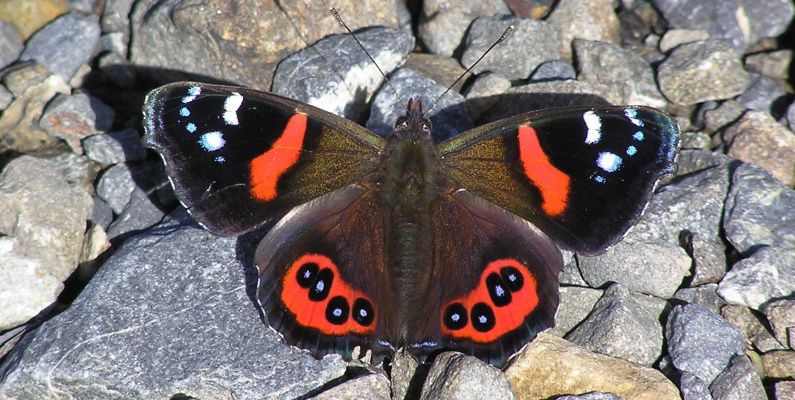
While Otago Museum is generally associated with the exotic butterflies you’ll find in our Tropical Forest, we’d also like to bring your attention to the butterflies that call New Zealand home.
New Zealand has a large number of unique, endemic species, and our butterflies are no exception.
While the most iconic butterfly may be the Monarch, which is found all over the world, we also have butterfly species that are found nowhere else on the planet. It’s not known exactly how many we have though, as some of our butterflies are currently being reclassified, and as more research is done species numbers are likely to change.
What we do know is that, as is the case with many of our native species, our butterflies are facing threats that are causing their population to decline. One of the main issues causing this decline is habitat loss, particularly the loss of important host plants for the butterflies. If you’ve ever tried your hand at raising Monarch butterflies, you’ll know that their caterpillars need the swan plant (Gomphocarpus physocarpus) to feed on. Like Monarchs, every butterfly species has a specific plant that its caterpillars need to survive, and we call this a host plant. Unfortunately, a lot of these plants have begun to disappear as we lose our native forests, and, as a result, butterflies are unable to reproduce.
One example is the red admiral butterfly (Vanessa gonerilla), a species that relies on stinging nettles as their host plant. Our native stinging nettle, ongaonga (Urtica ferox) is their primary host plant, although caterpillars can also feed on introduced nettle species. Unfortunately, nettles are an unwanted pest in gardens, and because of this, they are often removed, resulting in nowhere for butterflies to lay their eggs.

Image: Host plant exhibit in Tūhura Tropical Forest. By Sophie Adams. © Otago Museum.
In the Tūhura Tropical Forest during the Spring of 2019, we have a garden exhibition detailing some of our more common native butterflies, as well as examples of the plants they need to survive. Having these plants in your garden will support butterfly populations and prevent the loss of these species altogether.
If you’d like to help our butterflies even more, the Big Backyard Butterfly Count takes place 10 to 30 November. This project uses citizen scientists to count the butterflies they see in their backyard or local park, providing data to help monitor butterfly populations. You can pick up a count sheet when you visit the museum during this time, or visit https://www.monarch.org.nz/projects/big-backyard-butterfly-count/
The native butterfly exhibition will be on until mid December in the Tūhura Otago Community Trust Science Centre, open 10am to 5pm daily, admission applies.
